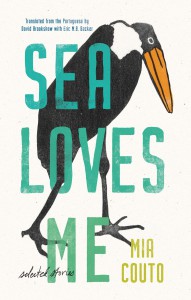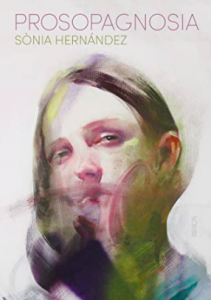Amongst the great gifts that translation brings us is an awareness to the alternation and variegations of perspective, informed by ever-shifting factors of fact, selfhood, relationships, and hearsay alike. In this month’s roundup of excellence in world literature, our selection of texts brings expansive voices to light in exquisite explorations in what it means to remember, comprehend, and believe: a luminous text on family history from Maria Stepanova, the reimaginings of folktales by Mia Couto, and a deft fiction on self-deceptions by Sònia Hernández.

In Memory of Memory by Maria Stepanova, translated from the Russian by Sasha Dugdale, New Directions, 2021
Review by Darren Huang, Editor-at-Large for Taiwan
In W.G. Sebald’s final novel Austerlitz, the protagonist Jacques Austerlitz—an art historian who arrived in Britain as an infant refugee from Czechoslovakia in the Kindertransport—searches for the fate of his parents, who were displaced and lost amidst the Holocaust and the Second World War. The novel is a poetic and digressive excavation of family history through the innovative hybrid of photography, travelogue, history, art criticism, and fiction, as well as a meditation on the horrors of the twentieth century, the unreliability of memory and memorialization, and the weight of the past on the present. This unique, peripatetic narrative method of ruminating over the past, which Sebald described as “documentary fiction,” is adapted by the highly acclaimed Russian novelist, poet, and essayist Maria Stepanova in her autofictional, essayistic memoir, In Memory of Memory, elegantly translated by Sasha Dugdale for New Directions. Like Sebald, and Theresa Hak Kyung Cha in her multi-genre novel Dictee, Stepanova adopts an oblique, multifaceted approach towards her central project of assembling a family history dating from the late nineteenth century. She lodges memoir like a puzzle box within cultural commentary, historical documents from her ancestors, philosophical discourse, and literary criticism; the result is a densely textured memoir-in-fragments that is alive to the limitations of its project—the lack of historical evidence, the inaccuracies in memory, the fraught relationship between the storyteller and her subjects, and the inevitable incompleteness of the family narrative.
The text is deliberately structured into three distinct portions: the first two sections alternate between cultural criticism, personal anecdotes, and historical documents. Certain “chapters,” wryly entitled “Not a Chapter,” are entirely composed of letters from her forbears, including her maternal great-grandparents, Sarra Ginzburg and Mikhail Fridman, her maternal grandparents, Lyolya and Lyonya, and her paternal grandparents, Nikolai Stepanov and Dora Stepanova, among others. The letters, chronologically arranged from 1942 to 1985, offer intimate glimpses into the personal lives of Stepanova’s family, and serve additionally as pieces of cultural history. They are redolent of a particular place and time, evoking what Stepanova calls “a feeling for the age.” Each epistolary “chapter” is accompanied by minimal context or commentary and separated from each other by essayistic inquiries into memory—ranging from such subjects as the photograph, Charlotte Salomon and her epic novel Life? Or Theatre?, Sebald and his writings on history, and the memory boxes of Joseph Cornell. In the first two sections of the text, this digressive arrangement interrupts the family narrative so that it only appears in decontextualized fragments. The effect of this bifurcated structure is that the family narrative remains mostly unexplored until the end of the second section and the third section, which consist of more conventional biographical accounts of family members. Stepanova’s delay in directly grappling with both her personal and family history reflects her anxieties about writing on the past. For example, she cites Marianne Hirsch’s concern that inserting archival photographic images might de- or re-contextualize them and distort their original realities. Therefore, the sections of cultural criticism represent the author’s hesitant, fitful attempts at approaching the past, which she finally accesses in the final third of the novel. In these critical chapters, Stepanova admits to “picking through different approaches to the past, as one might pick through dried peas, in search of one that might work.”
Stepanova’s oblique yet layered approach allows her to interrogate the relationship between her personal history, her ancestral history, and the collective cultural history of Europe and Russia. One of the most striking figures who emerges from the text is Sarra Ginzburg, Stepanova’s maternal great-grandmother: a strongminded woman who had been arrested for handing out Communist literature as a teenager; trained in Paris for seven years to become a doctor, subverting the expectations of her traditional family; and who lived to a grand old age through the Russian Civil War, the Second World War, and other historic upheavals of the twentieth century. In a passage in which she searches for Sarra’s past, Stepanova describes her stay in a small Parisian hotel where the young Sarra had once lived as a medical student. While conversing with the dignified owner of the hotel, he confirms that she is Jewish like himself. This conversation and stay become an occasion for a meditation on her own alienating experiences of being Jewish in Europe, Sarra’s life as a Jewish medical student, and the collective history of Russian students abroad in the early twentieth century. Here, in this superimposition of three histories, Stepanova recalls Sebald by suggesting the porousness between the past and present, as well as between personal and collective histories. This is a characteristic example of the deft way Stepanova not only situates the individual within a broader cultural history, but uses that collective history to color in the incomplete portraits of her ancestors.
Nevertheless, Stepanova is haunted by a sense of failure—that despite all her efforts at archival research, the collecting of family histories, and the scavenging of photographs and souvenirs, her vision of the past can only ever be partial, and her ancestors will remain within the shadows. At the start of the text, she knows that any surviving remnant of the past, whether a photograph or a letter, is “fragmentary and flawed,” but “in [her] soul, [she] craves the whole, the inviolate.” One of the great achievements of this memoir is that it subtly describes the transformation in the narrator’s perspective towards her ancestral past and the project of writing a family history. At first, Stepanova is convinced that she has a responsibility to shore up her family past against oblivion. But she learns to embrace the lacunae, the loss of heirlooms, and the incompleteness of the narrative. She learns to live with the inevitable disappearance of the past. Like her heroes Tove Jansson and Osip Mandelstam, she realizes “all the past is carried off into oblivion, and it leaves a clear space for the future.”

Sea Loves Me, selected stories by Mia Couto, translated from the Portuguese by David Brookshaw & Eric M. B. Becker, Biblioasis, 2021
Review by Thuy Dinh, Editor-at-Large for the Vietnamese Diaspora
When António Emílio Leite Couto was three years old, he renamed himself Mia, or miaow, professing in an interview that: “I didn’t just like cats; I thought I was a cat. Every child feels that more open borderline between themselves and other beings and creatures.” After his Portuguese parents fled Antônio Salazar’s fascist regime to settle in Mozambique, Couto was born in Beira—the port city that serves as a gateway for both the central interior of the country as well as the landlocked nations of Zimbabwe, Zambia, and Malawi. It seems that Couto’s biographical circumstances and his native environment have converged, shaping him into a writer whose lifelong mission is to acknowledge and reconcile the violent chasms created by Portugal’s legacy of colonialism.
Considered one of Lusophone Africa’s most important writers, Couto was awarded the Neustadt Prize in 2014 for his novels, but was first known for his short stories, most of which read like flash fiction or prose poems. In this collection of sixty-four tales (thirty-six appearing for the first time in English), Couto employs his haunting lyricism—which he describes in his Neustadt acceptance speech as writing that seeks to “have the lightness of wings” but “plunge like lightning hungering for earth”—to examine the burdens of race, history, and culture in the aftermath of Mozambique’s 1974 independence from Portugal.
Each morning, he would pass through the white folks’ neighborhood, carrying his enormous cages . . . made . . . from such flimsy material that they didn’t look like a prison . . . [but] winged cages, cages that might fly away. Inside them, the birds flutter around in a twinkle of colour . . .
And the children would flood the streets. Joyfulness was exchanged: the birds shout and the children chirped. The man would take out a muska and put sleepy melodies to tune. The whole world was filled with stories.
In “The Bird-Dreaming Baobab”—a parable that reads like an inversion of the Pied Piper of Hamelin—the Black birdman who enchants the children of white Portuguese settlers with music and colorful birds represents the natural agent of assimilation. He is thought to be “other” or “barbaric” by the children’s parents, who refuse to acknowledge the fact that they are guests on the birdman’s land; instead, they see him as a threatening figure who lures their children away from the empiricist values of a transplanted, thus destabilized, European worldview. Just as in the German fairy tale, the parents’ hostility leads to the vanishing of the innocent, although the “vanishing” in this case could also be interpreted as transformation and rebirth.
And in an act of symmetrical motherhood, together they tied the thread around the child.
Couto’s compact tales, which require several re-readings, represent a deft restructuring of iconic legends in the global canon. “The Blessing,” like “The Bird-Dreaming Baobab,” is about divided loyalties—in this case an escalating tug-of-war between the white parent of a sickly child and his Black nursemaid. The story evokes Solomon’s Judgment: who is more deserving of being the child’s custodian: his educated, high strung biological mother, or the unorthodox, unflappable nanny? In Couto’s version, there is no external wisdom decreed by a white male in power, but the gradual epiphany of both women—that they are equally essential for the child’s well-being.
In Couto’s universe, all power structures remain in flux since there is no clear us or them: those in power depend on subjugated beings for emotional sustenance, basic care of the household, and the tending of the land. Perceptive Blacks either consort with, or secretly desire, their masters’ wives. The colonized class, even under imminent threat of destruction, finds creative means to resist oppression. In “The Russian Princess”—a story reminiscent of both Tolstoy and Faulkner—Fortin, Black butler to a Russian gold prospector and his wife, fancies himself to be the wife’s romantic rescuer when he pretends to aid her in escaping her marriage. In “The Captain’s Lover,” it is the Portuguese captain, not the gender fluid Black lover, who becomes a lovelorn Madame Butterfly prototype.
In many cases, the gradual erosion of power is camouflaged by a daily performance of the status quo. One of the best stories in the collection, “Isidorangela’s Fat Name,” projects a Rashomon, fun-house effect. In the story, the wife suspects her husband of harboring homosexual feelings toward the town’s mayor; the teenage son thinks he’s being used as a romantic pawn to advance his father’s career; and Isidorangela thinks the son is in love with her. Through this farcical drama, the mayor—while presumed to have the most power over the other characters—turns out to be a figurehead cuckolded by his wife’s not-so-secret dalliance with the father.
As with his natural empathy toward cats, Mia Couto’s fiction blurs the boundary between human and animal, matter and anti-matter. An ox is not merely a force of production, but also a spiritual emblem connected to its owner. In “The Day Mabata-Bata Exploded,” the demise of Mabata-Bata—the ox—with its flesh flowering “into red butterflies” from a landmine explosion, foreshadows his young herder’s death–sacrificed for the environmental transgressions of materialistic adults. In “Rosita,” it is not until near the end of the story that the reader realizes the narrator’s best friend, Makalatani, is an ox—and possibly a ghost—who helps the narrator survive a flood.
“Sea Loves Me,” the longest story in the collection, symbolizes the uneasy, restless merging of the colonizer and the colonized in Mozambique’s post-independence period. The confluence of cultures, like water, brings about certain erasure and creates new foundation myths. Language has to adapt to the aftermath of history:
In the language of our area, there is no exact word for “to fish.” We say “to kill the fish.” There is no special word for “boat.” And we call the ocean “the big place.” We are people of the soil, the sea is a recent arrival.
The sea that turns Mozambicans into sailors and fishermen represents forgetfulness, economic struggle, emigration, a turning away from traditional culture, but it also suggests openness, acceptance, and renewal.
Mia Couto’s multivalent vision also manifests in the seamless merging of author and translators, original and translated texts. While Sea Loves Me features two translators, David Brookshaw and Eric M. B. Becker (our own former Assistant Managing Editor), the stories read as if they come from a unified voice. The verve of both translators highlights Couto’s playfulness in Portuguese and showcases the translators’ inventive renderings in English:
[S]he was half and half, both fish and fowl, prone to ambivolatility.
(David Brookshaw, “The Captain’s Lover”)She was very vice-versatile in the way she could change.
(David Brookshaw, “Ezequiela, Humanity”)He would row, lazurely, barely scraping the oar across the current.
(Eric M. B. Becker, “The Waters of Time”)She murmurmuses . . .
(Eric M. B. Becker, “Rain”)
Like Mia Couto’s aesthetic effort to render whole the many facets of his contradictory identity, the translators’ linguistic dance simultaneously pays homage to his original fiction, and gives birth to its autonomous and indelible existence in English.

Prosopagnosia by Sònia Hernández, translated from the Spanish by Samuel Rutter, Scribe, 2021
Review by Andrea Blatz, Blog Copyeditor
What if you could change how you see the world? In Prosopagnosia, Sònia Hernández introduces three characters who are searching for new ways to experience life. Berta, a high school student, believes she only deserves ugliness and seeks out ugly things, while ignoring beautiful ones. Her mother, forty kilos overweight and freshly divorced, allows herself to be dazzled by a man who is always ready with a thought-provoking phrase. A man decides he would have liked to be real-life artist Vicente Rojo. and so studies him to adopt his identity. By defying traditional notions of perception, the characters follow parallel paths to uncover their own version of reality. Samuel Rutter’s translation brings to English readers for the first time one of Spain’s most reflective, unique authors. While many events occur in the novel, Hernández treats plot as secondary, as a way to establish and convey her own thoughts and beliefs.
The book is divided into two sections: “Prosopagnosia” and “The Man Who Thought He Was Vicente Rojo.” The first opens with Berta, who learns about the illness “prosopagnosia” one day in class and decides with two of her closest friends to make it into a game: whoever can hold their breath the longest wins—even if it means their vision becomes blurry, or they faint. One day Berta sees a painting in the hallway at school and holds her breath in order to change her perception of it, but she faints before she sees a different image. A man who claims to be the painter Vicente Rojo catches her, preventing her from hitting her head. After learning about the encounter with the painter, Berta’s mother—whose name we never learn—takes over the text, telling the reader about her past, interviews with the aforementioned artist, and her relationship with her daughter. In the second section, she continues to fill in holes in her past, and we further learn about the so-called artist’s life as well.
The mother’s story is shaped as a stream-of-consciousness journal entry of her attempt to take control of her life. We learn of her idea to interview the man who calls himself Vicente Rojo for a newspaper in order to earn respect as a journalist; oscillating between first and third person in her account, she often confuses herself—and the reader—about what is real. Berta’s mother becomes so engrossed and lost in the artist’s words that she compares herself to “Alice down the rabbit hole.” The combination of her thoughts, interview notes, and the artist’s quotes form her reality, one in which she is able to gain some aspect of control. It also mirrors Berta’s attempts at manipulating what she sees by holding her breath, as well as the man’s constructed, adopted identity.
Hernández’s wandering style meanders between the three characters’ stories and different points in time. At first glance, it seems to be the story of Berta, and then of her mother. However, by weaving the characters’ parallel stories together into one thread, she pushes the reader to reflect on how the people we meet—through family, chance, or circumstance—influence and become an integral part of our lives, impossible to disentangle despite our best efforts.
Throughout the narrative’s progression, the author also highlights various forms of self-deception practiced by the characters. When playing her prosopagnosia game, Berta deceives herself by trying to change the real world into something unrecognizable. Her mother only hears what she wants to hear in her interviews of the artist: soundbite-quality quotes about art and life. This blinds her to the reality that the man is not Vicente Rojo, despite her suspicions of his empty studio and the disbelief on the part of everyone else. Obviously, the artist is the most deceptive character, assuming the identity of another person, memorizing the actual artist’s words in order to embody what he represents.
These various deceptions, albeit disturbing, also allow Hernández to highlight the characters’ desire for recognition and validation. Berta searches for acknowledgement of her feelings, believing that seeing the world from a more complete perspective will offer her a deeper truth, one that is free from interference. Her mother wants to be recognized for her skills as a writer, from both her editor and readers of the newspaper—that interviewing a respected artist will lead to a discovery of her own truths. She tells herself that she’s always just about to catch a big story and become a well-respected journalist. Instead of creating a name for himself, the man claims the accomplishments of an already-established artist, intending to find the answers to the true Vicente Rojo’s quest: to seek out the “essential material, the truth we are made up of” to fill the void.
Ultimately, each character is trying to change not only how they see the world, but also how the world sees them. Hernández leads us on a reflection about truth and reality, about perception and beauty. The book is best read slowly, with time to absorb and contemplate our own reality and how we might be deceiving ourselves.
*****
Read more on the Asymptote blog:

